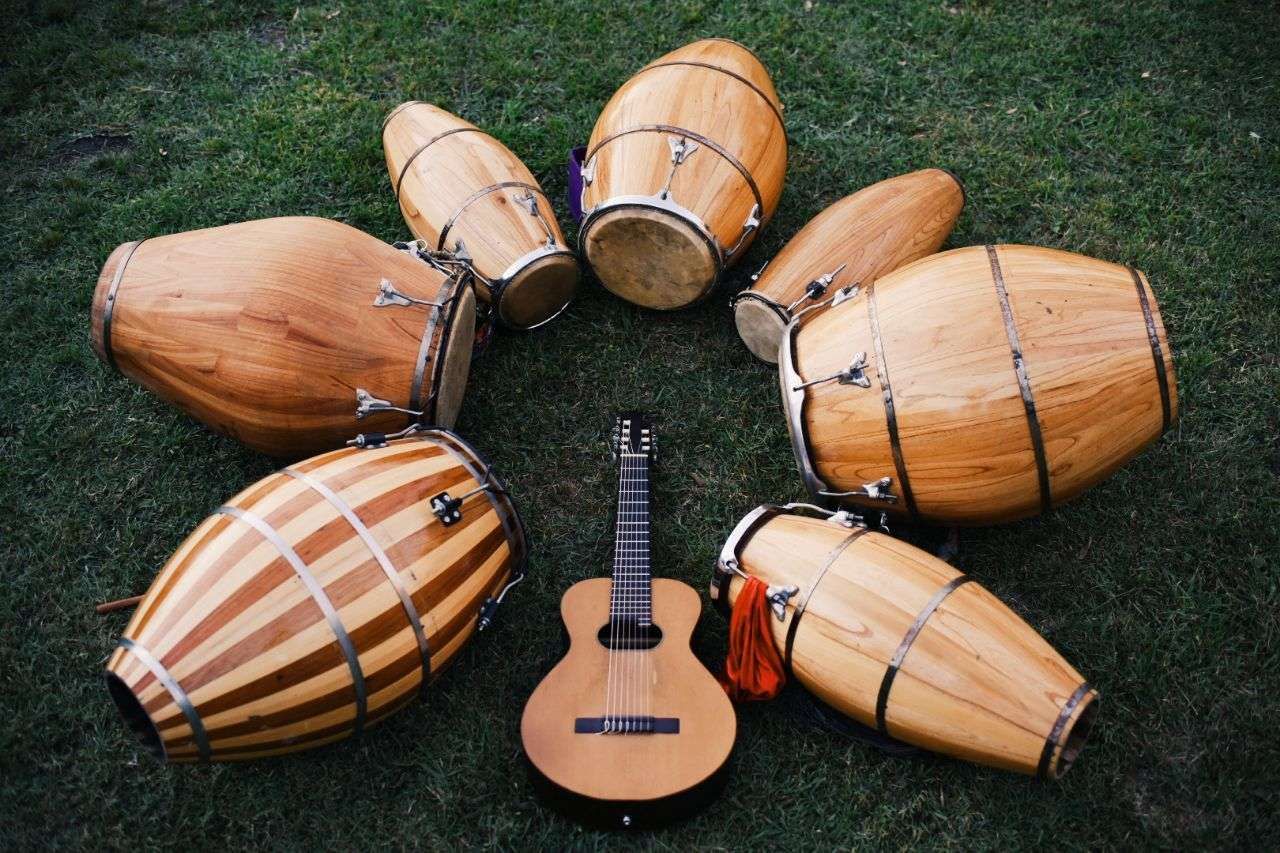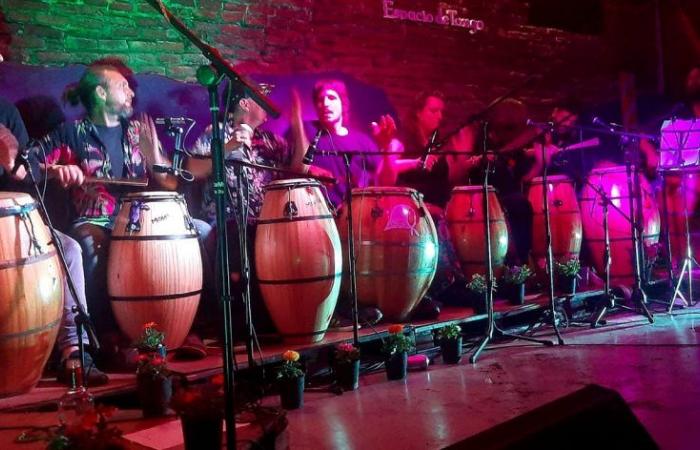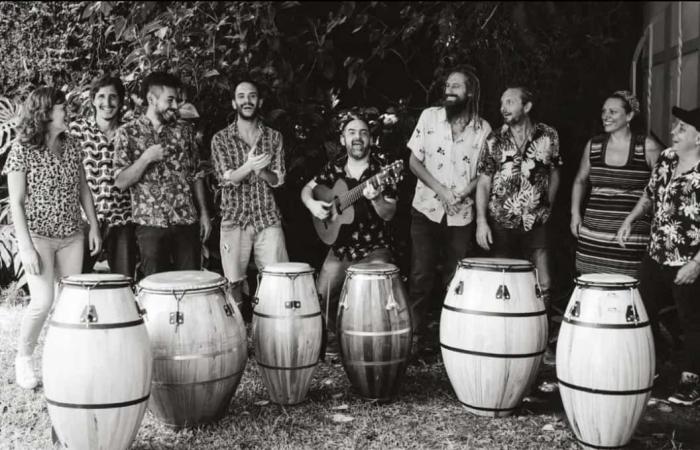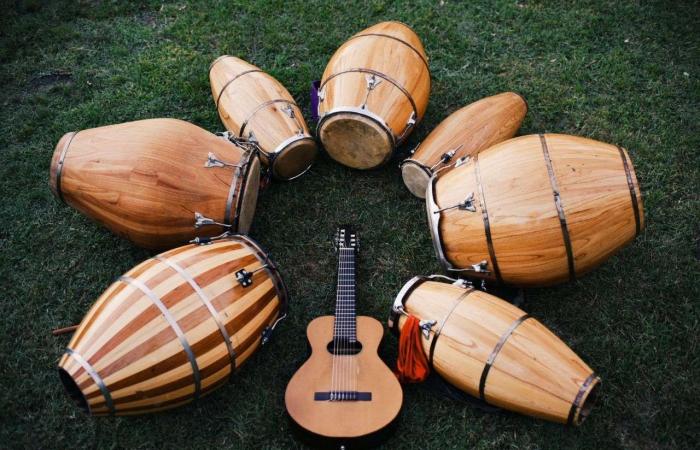By Lautaro Silvera
Ñacurutú Tambor is a musical community that combines various genres such as candombe, reggaetón, funk, cumbia, and murga, adapted with guitar, songs and eight drums. Juan Pablo Pérez, singer and composer of the group, describes their music as experimental and totally rhythmic. “Basically, they are songs that I composed and were captured in a somewhat strange format, which are within a 7-string guitar scheme and 8 drums that are the protagonists at all times. It has been like a laboratory for me, where there is candombe, Afro rhythms, funk, cumbia and murga matecito. All specifically adapted with well-singable songs,” explained the musician.
The origin of this project dates back many years, where in the context of a New Year’s Eve party, different songs from the popular repertoire were performed based on drum rhythms. The proposal fit so well that it quickly caught on and took shape. Perhaps without imagining it, this is how what is known today as Ñacurutú Tambor was created, which already has an album with seven songs ready to listen to on Spotify.
“In a search a while ago I came across some material by Hugo Fatorusso, where he plays with just a 5-octave keyboard, sings and has 3 or 4 drums, and everything sounded super complete. That’s how I said ‘the guitar has almost the same register as the keyboard; Let’s try,’ and he came out. We started little by little, it was an armando that took me a long time to mature. We started doing some covers, until later I added my own songs, as well as in dribs and drabs, and today we already have a very extensive repertoire,” Juan Pablo Pérez remarked, explaining a little about the origin of this ensemble musical project.
The rhythmic part is vital in Ñacurutú Tambor, where eight community drums are assembled perfectly, and makes one believe that any song can fit perfectly into this rhythmic train. “We were working on adaptations to other rhythms on the album, and luckily we have many songs, about thirty. But in our first recording we chose seven songs. For example, we started with a kind of reggaeton the first one, Criosho. Then there is candombe, Afro rhythms, funk, cumbia, and murga matecito, which is a rhythm from here, very much ours. “Everything specifically adapted with well-singable songs,” said the singer and guitarist of Ñacurutú.
The group uses an African three-voice technique to lead the ensemble, assigning specific roles to each instrument and voice to maintain cohesion and rhythmic complexity. By the way, Juan Pablo Pérez explained how such a rhythmic proposal begins to be organized: “I have the song more or less kneaded, with the arrangements. The way we work with the ensemble is with an old African technique, which is three voices. Candombe, for example, is played with three voices: the piano, the boy and the repique, where one is in charge of a different thing. For many years we started the weeks rehearsing every Monday from 9 in the morning, for three hours. It was quite a laboratory at the beginning, but the kids are very diligent. Everything has made this work process result in a super tight and well-kneaded sound,” recalled the musician and guitarist from Ñacurutú.


Ñacurutú Tambor recently released their first album, and they are preparing to participate in the Guale Emergente festival this Sunday, June 16, at the Teatro del Puerto, where from 6 p.m. there will be live music from Las Flores de Machiavelo, Blueslevard, La Carona, and the closing of Ñacurutú Tambor.









